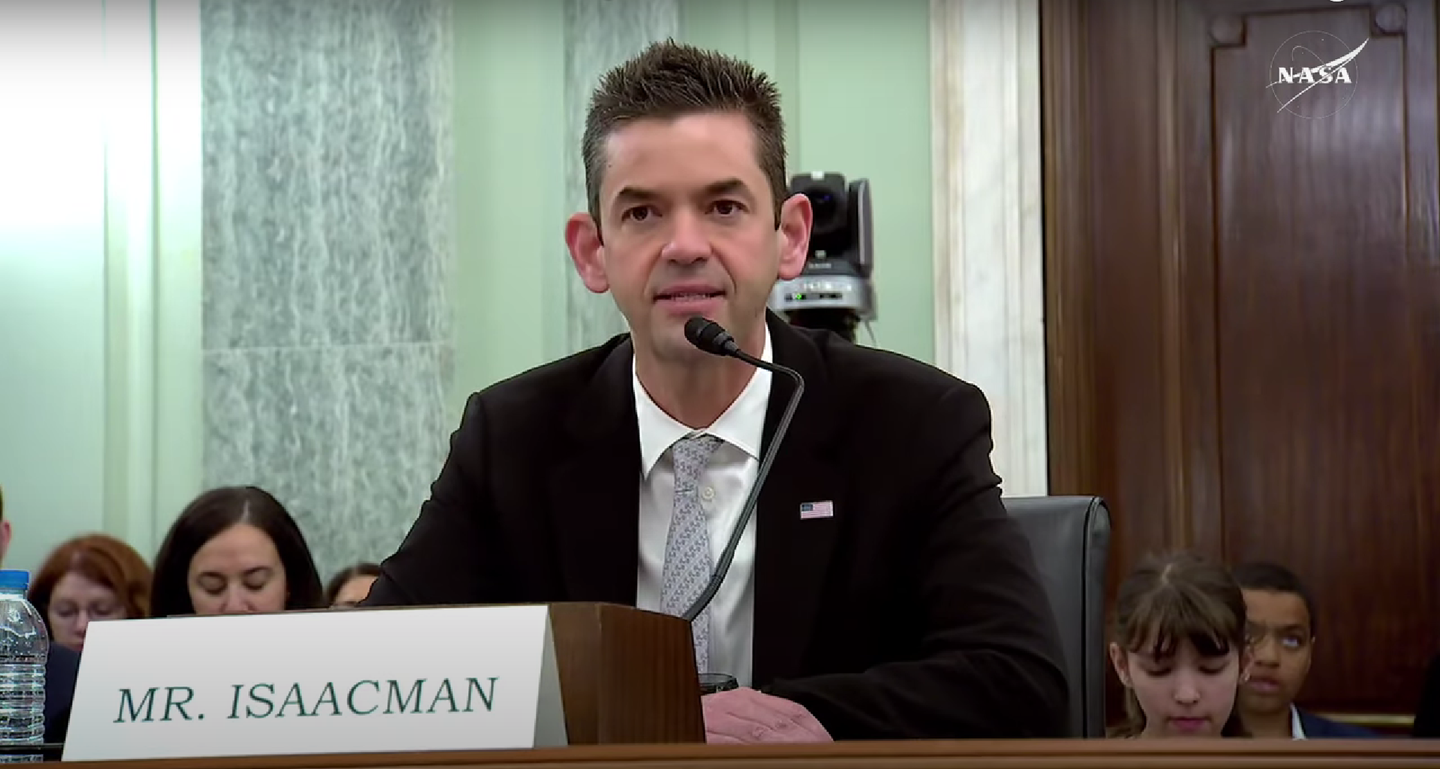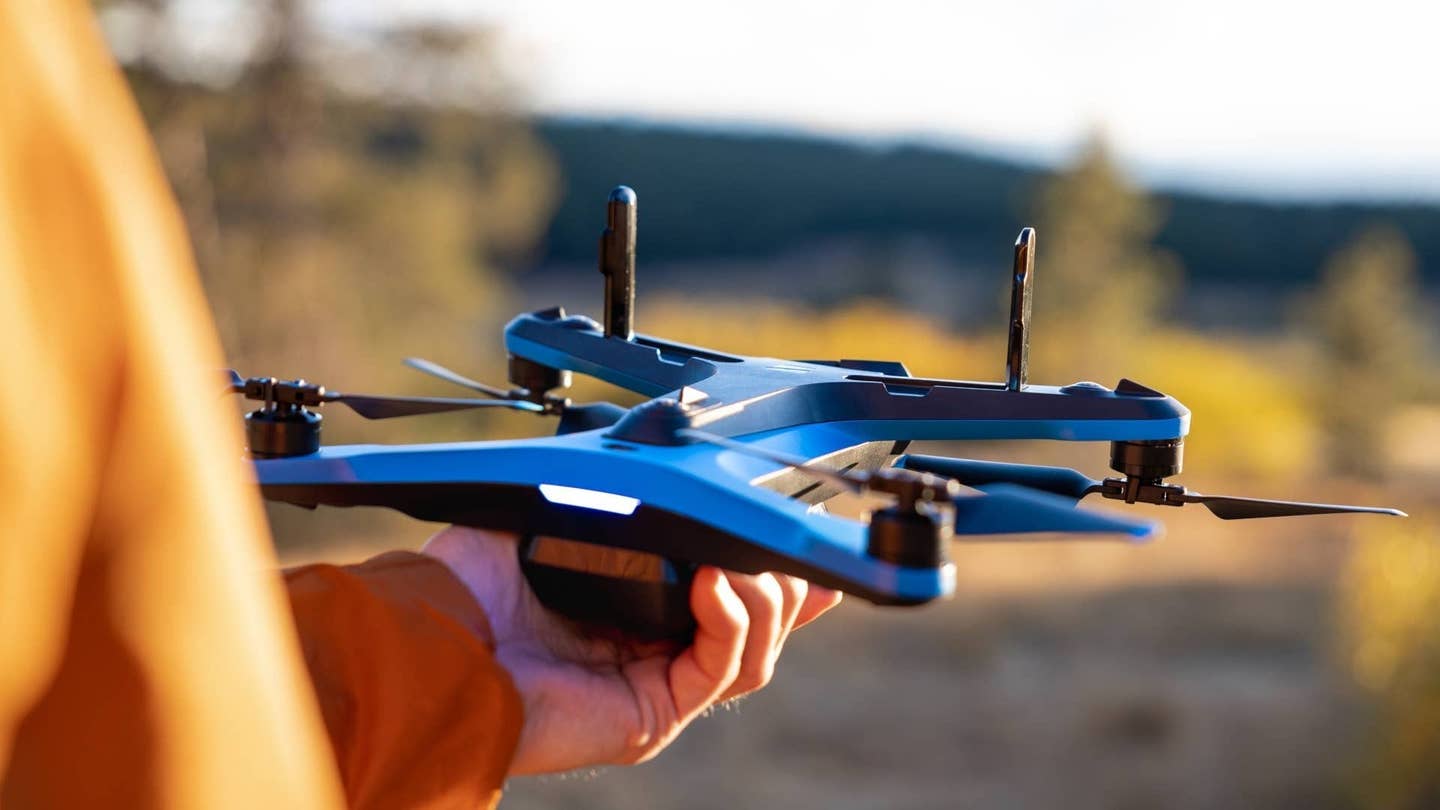NASA Investigation Finds Boeing Hindering Americans’ Return to Moon
A report from the space agency’s office of the inspector general pins the blame on the aerospace giant’s mismanagement and inexperienced workforce.

An artist’s illustration depicts NASA’s SLS Block 1B flying in crew configuration. [Courtesy: NASA]
Mismanagement and inexperience on the part of Boeing are creating severe delays and expenditures for NASA’s efforts to return Americans to the moon, according to a new report from the agency’s office of the inspector general (OIG).
The 38-page document, released Wednesday, paints the manufacturer’s quality control practices as inadequate and its workforce as insufficiently trained, blaming it for cost increases and schedule delays in the development of NASA’s Space Launch System (SLS) Block 1B. Yet the space agency has neglected to punish Boeing financially for these flaws, arguing that doing so would run contrary to the terms of its contract.
The heavy-lift rocket, a more powerful configuration of NASA’s existing SLS Block 1, is intended to make its maiden voyage in 2028 on the Artemis IV mission, a crewed lunar landing. It has been under development since 2014. Boeing is under contract to build Block 1B’s Exploration Upper Stage (EUS)—which will increase the SLS’ cargo capacity by about 40 percent—as well as the core stages for Block 1 on Artemis I and the upcoming Artemis II. Other SLS contractors include Aerojet Rocketdyne and Northrop Grumman.
A Day Late, A Dollar Short
Originally, the EUS was allocated a budget of $962 million and intended to fly on Artemis II, which in January was pushed to no earlier than September 2025. But by the OIG’s estimate, EUS costs are expected to balloon to $2 billion through 2025 and reach $2.8 billion by the time Artemis IV lifts off in 2028.
The office projects total SLS Block 1B costs will hit $5.7 billion before then—that’s more than $700 million over the Agency Baseline Commitment (ABC) NASA made last year. The EUS, at nearly triple its original budget, would account for close to half of those costs.
Add to that an expected six-year delay in the delivery of the system, and the OIG predicts Artemis IV’s launch could be postponed.
“NASA’s fiscal year 2024 SLS Program budget projections do not account for the additional funds needed for EUS development in fiscal years 2024 through 2027,” the report says. “Without additional funding, scheduled work will continue to be pushed into subsequent years as has been the case for the EUS over the last decade, leading to further cost increases and schedule delays.”
For example, the OIG says, NASA is evaluating potential risks to the EUS stage controller and avionics that could delay its delivery by another 14 months. NASA officials disagreed with the analysis.
Mismanaged and Inexperienced
The OIG interviewed officials at NASA headquarters, Marshall Space Flight Center, Michoud Assembly Facility, the Defense Contract Management Agency (DCMA), and Boeing. It also reviewed NASA and its contractors’ budgets, contract obligations, and quality control documents, among other materials.
In short, the office found that Boeing’s quality management system at Michoud does not adhere to NASA or international standards.
For example, Boeing Defense’s Earned Value Management System (EVMS)—which NASA uses to measure contract cost and schedule progress and is required on all projects with a lifecycle cost greater than $250M—has been disapproved by the Department of Defense since 2020. Officials claim this precludes Boeing from reliably predicting an EUS delivery date.
“Boeing’s process for addressing contractual noncompliance has been ineffective, and the company has generally been nonresponsive in taking corrective actions when the same quality control issues reoccur,” the OIG says.
The DCMA has issued several corrective action requests (CARs), handed down when quality control issues are identified, for the EVMS. Between September 2021 and September 2023, the agency issued Boeing a whopping 71 CARs after identifying quality control issues in the manufacturing of core and upper stages at Michoud. According to officials, that’s a massive number for a system that has been in development for so long.
“Boeing officials incorrectly approved hardware processing under unacceptable environmental conditions, accepted and presented damaged seals to NASA for inspection, and used outdated versions of work orders,” the report says. “DCMA also found that Boeing personnel made numerous administrative errors through changes to certified work order data without proper documentation.”
According to Safety and Mission Assurance officials at NASA and DCMA officials at Michoud, Boeing’s quality control issues stem from a workforce that is, by and large, unqualified.
During a visit to Michoud in 2023, for example, inspectors discovered that welding on a component of the SLS Core Stage 3 did not meet NASA standards. Per the report, unsatisfactory welding performed on a set of fuel tanks led directly to a seven-month delay in EUS completion.
“According to NASA officials, the welding issues arose due to Boeing’s inexperienced technicians and inadequate work order planning and supervision,” the OIG says. “The lack of a trained and qualified workforce increases the risk that Boeing will continue to manufacture parts and components that do not adhere to NASA requirements and industry standards.”
Complicating matters further is the relocation of SLS core stage production for Artemis III from Michoud to Kennedy, which will require Boeing to transition a decade of production processes developed at the former site to the latter.
The OIG said the manufacturer is developing a more robust, hands-on training program that could revamp its workforce but is long overdue.
“Some technicians reported they had to hunt through layers of documentation to identify required instructions and documentation of work history and key decisions related to the hardware,” the report says.
Further, maintaining that workforce may be difficult—the OIG predicts Boeing will spend an average of $26 million per month on EUS personnel through 2027. That was the norm for the company from February to August 2023.
Boeing management has also dropped the ball at higher levels. For instance, in the leadup to Artemis I, Boeing underestimated the complexity of building the SLS core stage, and EUS funding had to be redirected to that project.
“This ultimately led to a nearly one-year delay in EUS work and an additional $4 billion in funding to Boeing to cover the costs for the core stage development work,” according to the OIG.
In addition, NASA officials believe Boeing’s supply chain woes are of its own making, stemming from late negotiations and contract agreements.
Next Steps for NASA
The OIG report paints the picture of a company in disarray from top to bottom.
The office did not pin the blame entirely on Boeing. It criticized NASA, for example, for spending more than $3 billion over ten years without submitting an ABC to Congress and the Office of Budget and Management. The ABC is the only official cost and schedule baseline used to measure project performance against expectations.
The office’s four recommendations, however, center around the manufacturer.
First, the OIG calls on the associate administrator of NASA’s Exploration Systems Development Mission Directorate (ESDMD), alongside the agency’s assistant administrator for procurement and chief of safety and mission assurance, to collaborate with Boeing on a more robust, NASA-approved quality management system. It also recommends officials penalize the company financially for its previous violations.
The OIG further directs the ESDMD to conduct a cost overrun analysis of Boeing’s EUS contract to minimize the impact to Artemis missions. Finally, it asks the associate administrator to coordinate with the DCMA to ensure Boeing’s compliance with EVMS requirements.
NASA agreed with three of the four recommendations and proposed actions to take. Interestingly, though, it rejected the suggestion of fining Boeing.
“NASA interprets this recommendation to be directing NASA to institute penalties outside the bounds of the contract,” said Catherine Koerner, deputy associate administrator of the ESDMD, in NASA’s response to the report. “There are already authorities in the contract, such as award fee provisions, which enable financial ramifications for noncompliance with quality control standards.”
Essentially, the agency believes it can keep Boeing in check by rewarding good behavior rather than penalizing mismanagement. The OIG, predictably, disagrees, characterizing NASA as “unresponsive” to what it considers significant safety concerns.
“In the end, failure to address these issues may not only hinder the Block 1B’s readiness for Artemis IV but also have a cascading impact on the overall sustainability of the Artemis campaign and NASA’s deep space human exploration efforts,” the report says.
Boeing will look to improve some of its quality control issues under the leadership of new CEO Kelly Ortberg, the ex-boss of Rockwell Collins who took over after the ousting of former CEO Dave Calhoun.
Calhoun’s departure this month comes as the company continues to be grilled over the loss of a door plug on a Boeing 737 Max 9 in January as well as persistent issues with Starliner, its semireusable spacecraft under contract with NASA for astronaut rotation missions to the International Space Station. Astronauts Butch Wilmore and Suni Williams may end up spending eight months on the orbital laboratory, rather than eight days as intended.
Like this story? We think you'll also like the Future of FLYING newsletter sent every Thursday afternoon. Sign up now.

Sign-up for newsletters & special offers!
Get the latest FLYING stories & special offers delivered directly to your inbox






